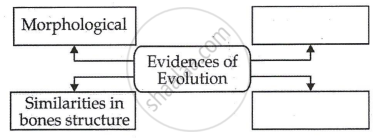Advertisements
Advertisements
Question
Some dinosaurs had feathers although they could not fly birds have feathers that help them to fly. In the context of evolution, this means that ______
Options
reptiles have evolved from birds.
there is no evolutionary connection between reptiles and birds.
feathers are homologous structures in both organisms.
birds have evolved from reptiles.
Solution
Some dinosaurs had feathers although they could not fly birds have feathers that help them to fly. In the context of evolution, this means that birds have evolved from reptiles.
APPEARS IN
RELATED QUESTIONS
The wings of a housefly and the wings of a sparrow are an example of :
(a) analogous organs
(b) vestigial organs
(c) respiratory organs
(d) homologous organs
There are five animals A, B, C, D and E. The animal A uses its modified forelimbs for flying. The animal B uses its forelimbs for running whereas the animal C uses its forelimbs for grasping. The animal D can live on land as well as in water and uses its forelimbs to prop up the front end of its body when at rest. The animal E which respires by using spiracles and tracheae uses wings for flying but its wings are analogous to the modified forelimbs of animal A.
(a) What could the animals A, B, C, D and E be?
(b) Why are the forelimbs of animals A, B, C, D called homologous organs?
(c) What does the existence of homologous organs in animals A, B, C and D tell us about their ancestors ?
(d) Why are the modified forelimbs of animal A and the wings of animal E called analogous organs?
(e) State whether animals A and E have a common ancestor or not.
Give scientific reason.
Vertebrates have slowly originated from invertebrates.
Select the CORRECT set of homologous organs.
- Define vestigial organs.
- Write names of any two vestigial organs in the human body.
- Write name of those animals in which these vestigial organs are functional.
Homologous organs are:
The study of fossil evidence of evolution is called ______
Give an example for convergent evolution and identify the features towards which they are converging.
Write a note on the significance of Palaeontology.
Complete the following conceptual picture:

